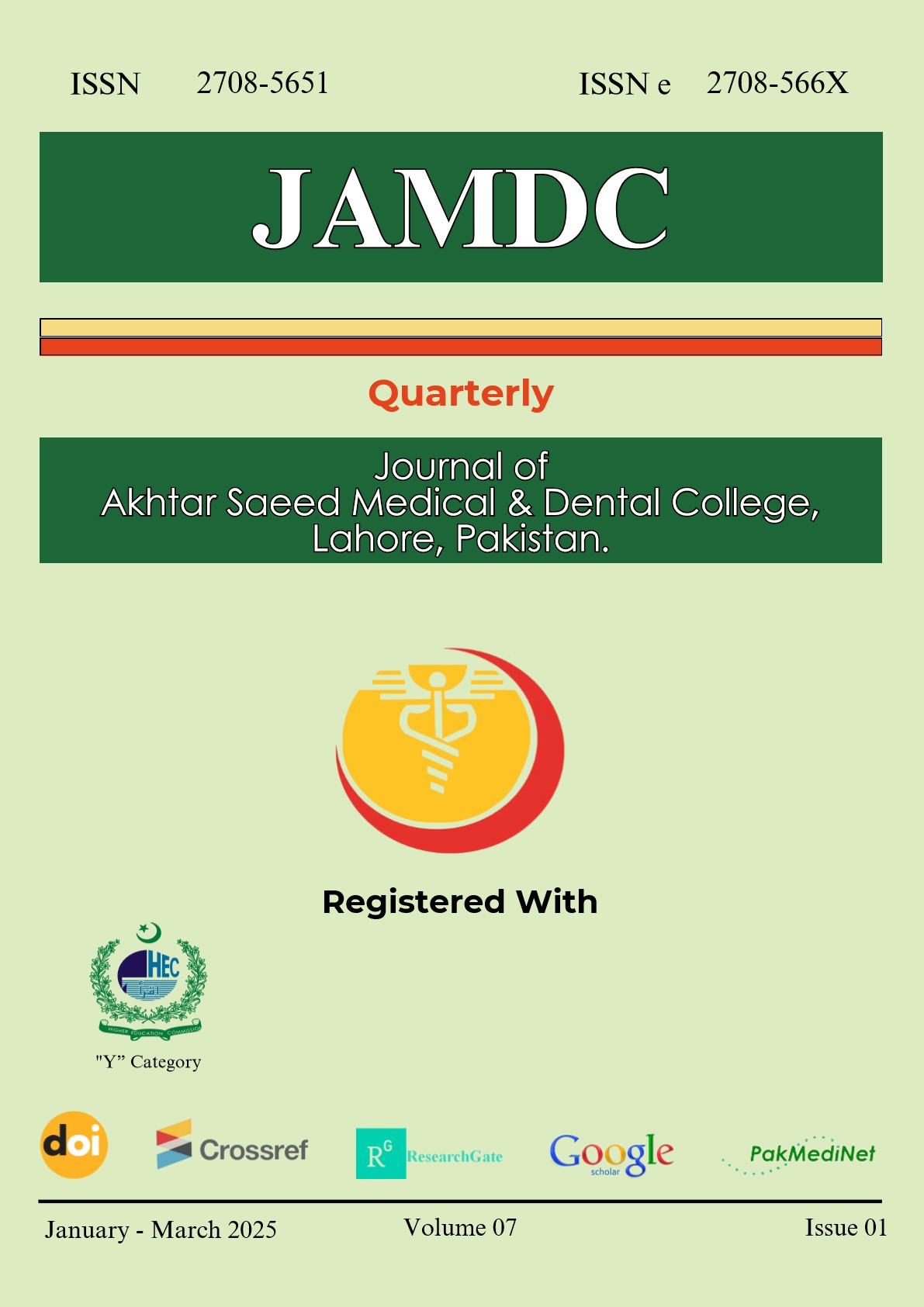NEUTROPHIL LYMPHOCYTE RATIO AND PLATELETS LYMPHOCYTES RATIO WITH GLYCEMIC CONTROL IN PATIENTS WITH DIABETES MELLITUS
Main Article Content
Abstract
Abstract
Background: Diabetes mellitus (DM) is a long-term health problem, which causes swelling of a
tissue. The Neutrophil-to-Lymphocyte Ratio (NLR) and Platelet-to-Lymphocyte Ratio (PLR) are
promising biomarkers of the blood sugar level in the type 2 diabetes mellitus (T2DM) Patients. The
purpose of the study is to evaluate the relationship between NLR, PLR, and glycemic control in T2DM
patients.
Methods: The inclusion of 102 T2DM patients who had HbA1c levels <7% and >7% was based on
a cross-sectional study carried out at Allama Iqbal Medical College/Jinnah Hospital Lahore from May
to December 2024. Thereafter, the NLR and PLR were calculated through the blood counts. The most
important results were the change in the blood sugar levels HbA1c.
Results: Type 2 diabetes mellitus (HbA1c>7%) was noted in 63% of the patients, and it was correlated
with decrease in NLR and PLR (p<0.001) notes the relevance of such conflicting condivs. NLR
showed a positive correlation with HbA1c (r=0.45) and PLR a figure of 0.48.
Conclusion: A higher number of NLR and PLR in the body could lead to the development of poor
glycemic regulation in T2DM patients, identifying them as valuable diagnostic tools for disease
management and their benefits.

